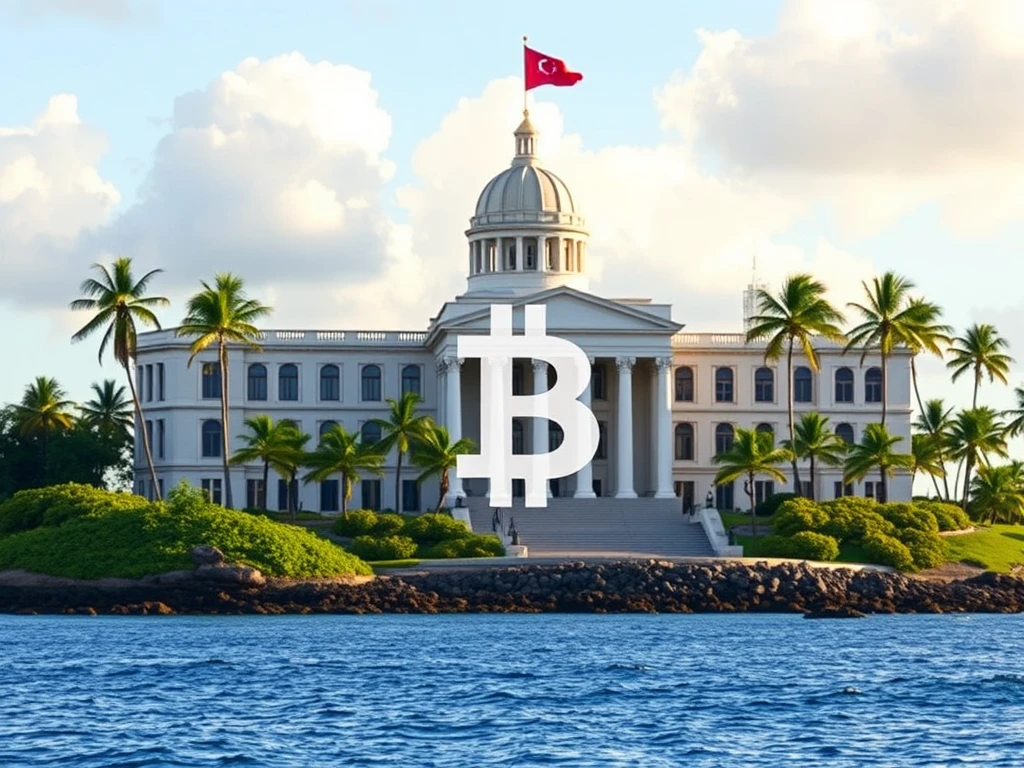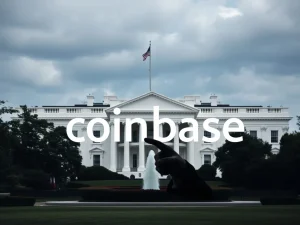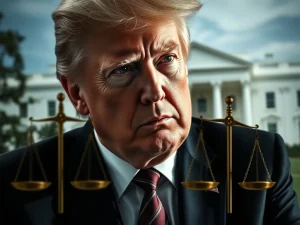Historic Stablecoin Bill Passes in Northern Marianas After Veto Override

A significant development is unfolding in the Northern Mariana Islands that could reshape the landscape for US government involvement in digital currency. The tiny Pacific island of Tinian is on the verge of launching its own stablecoin after the region’s legislature successfully overrode a gubernatorial veto on a crucial stablecoin bill.
How the Stablecoin Bill Passed in Northern Marianas
The journey of this stablecoin bill through the Northern Mariana Islands legislature involved overcoming a key hurdle: a veto from Governor Arnold Palacios. The bill, which allows the Tinian local government to issue internet casino licenses and includes a provision for a stablecoin, was initially passed by the Tinian delegation.
Here’s how the override happened:
- The bill was first passed by the Tinian delegation and sent to Governor Palacios.
- Governor Palacios vetoed the bill on April 11, citing legal and constitutional concerns, difficulty restricting activities to Tinian, and lack of enforcement measures.
- The nine-member Senate revived the bill on May 9, voting 7-1 to override the veto (requiring a two-thirds majority).
- The 20-member House then took up the bill and voted 14-2 to override the veto, also achieving the necessary two-thirds majority.
This legislative action paves the way for Tinian to move forward with its digital currency plans.
Introducing the Tinian Stablecoin: The Marianas US Dollar
At the heart of this bill is the creation of the “Tinian Stable Token,” officially named the Marianas US Dollar (MUSD). This stablecoin is designed with specific characteristics to ensure its stability and utility.
Key details about the Marianas US Dollar:
- Backing: MUSD will be backed by reserves of cash and US Treasury bills.
- Reserve Management: These reserves will be held and managed by the Tinian Municipal Treasury.
- Infrastructure Provider: Local tech services firm Marianas Rai Corporation has been selected as the exclusive infrastructure provider.
- Blockchain: MUSD is planned to launch on the eCash blockchain, a network that originated as a fork of Bitcoin Cash.
The Tinian government and Marianas Rai Corporation aim to launch MUSD soon, positioning it as a potential tool for economic development and attracting investment.
Is This the First US Government Stablecoin?
The passage of this bill puts Tinian in a unique position. The Municipality of Tinian and Aguiguan, as a local government entity within the US territory of the Northern Mariana Islands, could become the first public US entity to issue a stablecoin.
This move is notable because other US states are also exploring government-backed digital currencies. Wyoming, for instance, has publicly stated its intention to issue a stablecoin by July. Tinian’s swift legislative action means it could potentially beat Wyoming to the punch, setting a precedent for sub-sovereign US entities entering the stablecoin space.
The Debate: Why the Veto and the Override?
The legislative process wasn’t without contention. Governor Palacios raised several objections in his veto letter, primarily focusing on potential legal and constitutional issues, concerns about regulating internet gaming activities that might extend beyond Tinian’s borders, and the perceived lack of robust enforcement mechanisms to prevent illegal gambling.
During the override debate in the House, lawmakers heard arguments both for and against the bill:
- Supporters, like Marianas Rai Corp. co-founder Vin Armani, argued the bill could attract billions in investment and tax revenue without requiring government funds. Director Clyde Norita emphasized the need for economic revitalization in Tinian, stating the local economy was “dying out” and this bill offered a path forward through a digital industry. Representative Patrick San Nicolas highlighted the potential to generate revenue independent of tourism or federal subsidies.
- Opponents, such as Representative Marissa Flores, expressed reservations, linking the bill to the controversial topic of casinos and suggesting the decision was being driven by economic desperation. Flores voiced concern about being “pushed to a corner to make a decision based on fear,” recalling past instances where desperate measures related to gambling proved problematic.
Despite the concerns, the majority in both the Senate and the House ultimately decided the potential economic benefits outweighed the risks cited by the governor.
What’s Next for the Marianas US Dollar?
With the veto overridden, the path is now clearer for the Tinian government and Marianas Rai Corporation to proceed with the launch of the Marianas US Dollar. A spokesperson for Marianas Rai Corp. indicated that more details about the MUSD launch would be announced soon.
The successful implementation of the MUSD could serve as a case study for other local or state governments in the US considering their own digital currency initiatives. It also highlights the diverse and sometimes unexpected ways blockchain technology and stablecoins are being explored for economic development in different jurisdictions.
Conclusion: A Small Island Makes a Big Crypto Move
The override of the governor’s veto in the Northern Mariana Islands marks a pivotal moment. By passing the stablecoin bill, the legislature has empowered the island of Tinian to potentially become the first US public entity to issue a stablecoin. While challenges and debates remain, particularly regarding regulatory enforcement and the intersection with internet gaming, the move signals a bold step towards leveraging digital assets for economic growth in this Pacific territory. The world of cryptocurrency is watching to see how the Marianas US Dollar unfolds and whether Tinian can indeed lead the way for US government stablecoins.










